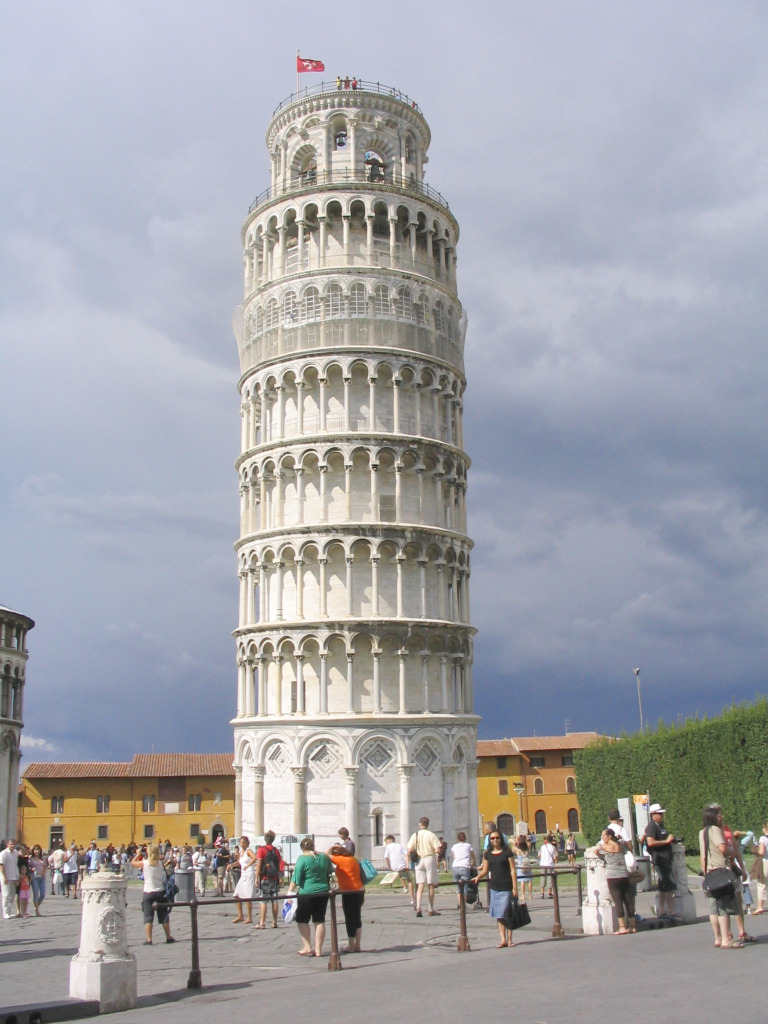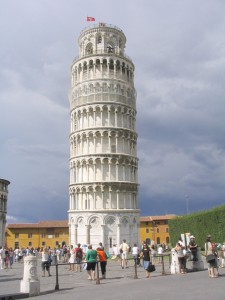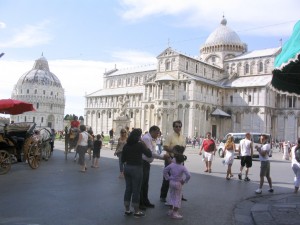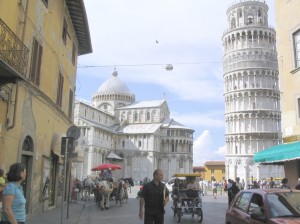Who hasn’t heard about famed Leaning Tower of Pisa? When I was planning a road trip from Rome to Provence (France), I decided to stop in Pisa precisely to see this well-known attraction.
The Leaning Tower of Pisa is surely of Italy’s most well-known architectural landmarks and is just one of the important sights you’ll find in the Campo dei Miracoli (Field of Miracles). The religious heart of Pisa, the Campo dei Miracoli is surrounded by the Cathedral, Baptistery and the Camposanto Cemetery. The Leaning Tower, called the Torre Pendente in Italian, has captured the attention of the Pisans and countless visitors for centuries. And a lean like that certainly does hold one’s attention!
When I first saw this piazza it was so enchanting and very surreal. It was, for a lack of a better word, charming and enchanting. Often described as one of the prettiest piazzas in Italy, the Campo dei Miracoli is truly a splendid example of the Pisan Romanesque architectural style.
Surrounding the grassy lawn, where tourists and locals alike relax and picnic, you can see typical elements of this style in the elegant arcades, rows of thin columns and white marble creating a unified appearance in the Cathedral, Baptistery and the Leaning Tower of Pisa.
But what captures the eyes of most visitors to the Campo dei Miracoli is the decided lean to the bell tower. At about 185 feet tall and about 55 feet wide, the tower today leans at about a four-degree angle, making it 12 feet, 10 inches off of its vertical axis.
A lean like this didn’t happen slowly over time either. Construction began on the tower in 1173, and by the time the base and the first storey were completed the pronounced lean was already noted.
Yet, the decision was made to carry on, and over the next two centuries no fewer than three architects worked on the tower, each one trying to compensate for the lean. Finally, in 1372 the tower was topped off with the belfry designed by architect Tommaso Pisano.
At just about seven feet above sea level, the real problem of the lean has to do with the unstable sand and clay mixture underground, which actually gives a slight lean to most of the buildings in the piazza. Trying to figure out how to stabilize the eight storey tower has occupied countless architects and engineers since the 14th century.
In the mid 16th century, the celebrated artist, architect and writer Giorgio Vasari (1511-1574) successfully reinforced the base of the tower.
However, in the 19th century engineers destabilized the tower again when they pumped out a significant amount of ground water, unexpectedly causing the tower’s lean to increase.
By 1990 the lean was such a concern that the tower was closed to the public and millions of dollars spent in several different projects to stabilize and stop the tower from leaning more each year. Finally, in 1999, engineers secured the tower with steel braces and cables to surrounding buildings and removed nearly 70 tons of dirt from the ground on northern side of the tower. This up righted the tower slightly and finally stopped the lean from increasing – that is, at least for the next few centuries!
More information for the Leaning Tower of Pisa
From April to September Hours: 8:30 – 20:00 (last climb)
Except June- August: 8:30 – 23:00 (last climb)
Tickets are €15 onsite and €17 if reserved in advance (minimum 15 days in advance)
There are many combined tickets available that will save you some euros if you plan on visiting the Cathedral, Baptistery, Cathedral Museum and the Camposanto Cemetery.
Official website for the Leaning Tower of Pisa: https://www.opapisa.it/en/home-page.html
From Rome to Pisa
By train: The easiest way to get to Pisa from Rome would be by train. You could take the Eurostar from Termini Station in Rome to Pisa Centrale. The train journey takes about 3 hours and the cost of first class return ticket is about €100. If you are planning to go by train, visit the Trenitalia website to get the details and exact prices for the tickets. You can also purchase the tickets online at the Trenitalia website.
By car: If you are traveling, you there are two routes that you can take to Pisa. The coastal route would take about 4 hours 45 minutes while the internal route to Pisa will get you there in under 4 hours. When we went with the car, the main problem was parking. We were somehow able to find parking relatively close to entrance of the city and as such, it was just a short walk to our hotel and the Leaning Tower of Pisa.
View Larger Map
 BrowsingRome Blogging about my experiences and sharing my thoughts about Rome, Italy and beyond
BrowsingRome Blogging about my experiences and sharing my thoughts about Rome, Italy and beyond



